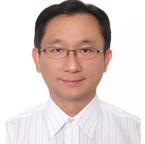Invited Speaker----Dr. Zeng-Yei Hseu

Professor, Department of Agricultural Chemistry, National Taiwan University, Taiwan
Dr. Zeng-Yei Hseu is a professor of pedology and environmental science in the Department of Agricultural Chemistry, National Taiwan University (NTU), Taipei, Taiwan. He received his PhD in pedology from National Taiwan University, Taiwan in 1997. Professor Hseu has been working in the field of soil science since 1990s. Being an assistant professor, he became an independent researcher in the Department of Environmental Science and Engineering, National Pingtung University of Science and Technology (NPUST), Pingtung, Taiwan in 2000. At NPUST, He was promoted as associate professor in 2003 and as full professor in 2006. He had been employed as a guest professor at Kyoto University in 2010 and at Meiji University in 2011, Japan. Professor Hseu was also elected the Head of the Department of Environmental Science and Engineering, NPUST (August 2013 to July 2015). Since August 2015, he was employed as a full professor in the Department of Agricultural Chemistry, NTU until now. He is President of East and Southeast Asia Federation of Soil Science Societies (ESAFS) (2018-2019) and President of Chinese Society of Soil and Fertilizer Sciences (2016-2019). His major topics of interest are heavy metal dynamics and mineralogy of serpentine soil, morphology and genesis of wetland soil, soil chronosequences on river and marine terraces, and soil heavy metal contamination and remediation. He is a member of the Soil Science Society of America and International Union of Soil Science, and The Clay Minerals Society. Professor Hseu is the author or coauthor of over 90 internationally scientific papers and book chapters.
Speech Title: A Critical Review of Phytoremediation for Heavy Metals-contaminated Soils
Abstract: The strategies for treating heavy metals-contaminated soils involve extraction or stabilization of the metals. Traditional remediation practices for soil contamination, such as excavation, washing, and landfilling, are less feasible on a large scale because they are environmentally disruptive and cost-prohibitive. These concerns have prompted the emergence of cost-effective and less disruptive alternatives for soil remediation by phytotechnology that has received increasing attention and is a promising solution for soil contamination. Phytoremediation shows strong potential for the treatment of the contaminated sites because it is an emergent in situ treatment that is economical and with a high probability of public acceptance. The main strategies of phytoremediation are phytoextraction and phytostabilization. However, only 450 plant species have been identified as hyperaccumulators of heavy metals worldwide for the purpose of phytoextraction, accounting for less than 0.2% of all known species in the plant kingdom. Most known hyperaccumulators are not only herbaceous species with small biomass, but are also confined to terrestrial environments and freshwater bodies. Chemical amendment and plant growth-promoting bacteria (PGPB) are commonly applied to enhance the phytoextraction by the increase of metal bioavailability. Alternatively, well-known crops are new potential accumulators of the metals. Phytostabilization primarily focuses on the sequestration of metals within the roots and rhizosphere. This remediation strategy creates a vegetative cap for the long-term stabilization and containment of contaminated sites. Phytostabilizer canopies reduce aeolian dispersion, whereas plant roots prevent water erosion, immobilize heavy metals by adsorption or accumulation, and provide a rhizosphere wherein metals precipitate and stabilize in the growth substrates. Serpentine soils are ideal sites for continuing to screen accumulating and stabilizing plants for the purpose of soil remediation. There is a greater need to exploit metals-rich soils for generating revenue by extracting saleable metals from hyperaccumulating plants. This approach is co-called phytoextraction that has been explored above. Moreover, phytomining is defined for recovering the metals as a bio-ore by taking up the metals in harvestable plant biomass through harvesting, drying, and incineration of the biomass to generate a high-grade bio-ore. Moreover, agromining by maximizing annual yield of metal in biomass, could provide an alternative type of agriculture on metals-rich substrates to recover target metals for circular economy.



